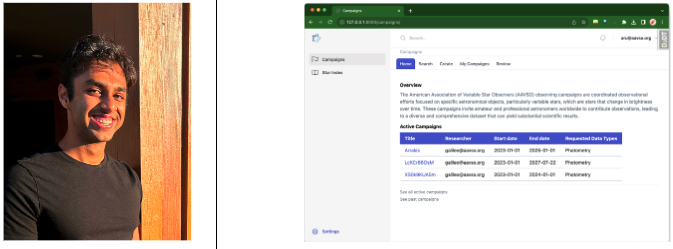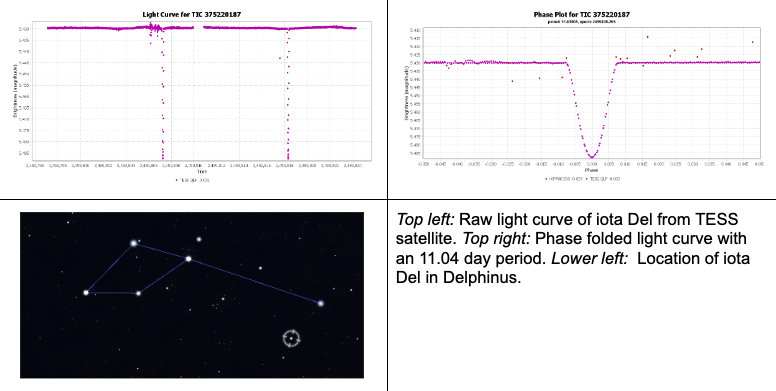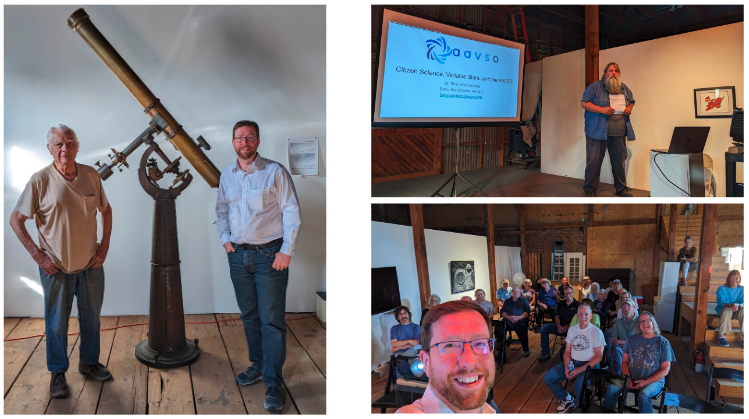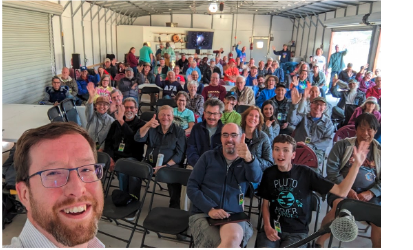The last quarter at AAVSO HQ was exceptionally busy, so it is with great enthusiasm that I write to you regarding our activities from April 1 – June 30, 2023. In this post I discuss the results of our annual campaign, improvements we’ve been making to our technological infrastructure, two recent meetings that are helping define AAVSO’s scientific future, three science highlights, and a few events I’ve recently attended.
2022 Annual Campaign
The AAVSO’s 2022 Annual Campaign wrapped up on June 5, 2023. In total, we raised $79,430 of our $110,000 goal. These funds will be used to fix issues with our technological infrastructure, implement the recommendations of the Data Quality Taskforce, and help find our niche in the automated sky survey era. While we did not meet our fundraising target, these funds should permit us to make substantial progress towards our goals.
Improvements to our technological infrastructure
Our first step of improving our technological infrastructure was to hire our first in-house software developer since 2015. Aru Bhoop (pictured below) graduated with honors from Clemson in 2019 with a B.S. in Computer Science. Prior to joining AAVSO, he served as a contractor for two startups where he created a variety of web applications.

Since joining AAVSO, Aru has been learning about variable star astronomy and investigating our existing infrastructure. His first development effort will be to replace our manual Observing Campaign submission process with a dedicated web application. We anticipate this will free up about two days of staff time per month while improving our communication with researchers. The application should be ready for deployment in 2023 Q3.
Our second step to improving our technical infrastructure was to task our IT contractor to document our existing architecture and provide recommendations for improvement. Their preliminary report indicates that we have several minor things to untangle before significant changes can be made. We will be working on addressing these items in Q3.
One last item I’d like to highlight is an effort spearheaded by George Silvis to move the Target Tool from filtergraph.com to aavso.org. While doing this, he also fixed several bugs that were causing significant performance degradation. One of these bugs was the reason why the “Last Observed” column was often significantly out of date. The Target Tool is now hosted at http://targettool.aavso.org/. I’d like to personally thank George for volunteering his time to support this project.
Finding our Niche in the Automated Sky Survey Era
With the help of Russ Genet and Rachel Freed, I hosted a hybrid workshop at the American Astronomical Society's 242nd meeting on June 3-4, 2023 in Albuquerque, NM. The workshop connected members of the sky survey community with owners and operators of small telescopes. Our objective was to find opportunities for these two communities to collaborate.
To succinctly summarize two days of meetings: there are ample opportunities for collaboration, but there are also some impediments that must be overcome. A final report on these items will be available in late August. Until then, you are welcome to view the talks on AAVSO’s website. Alternatively, you can listen to a talk I provided on the subject at the Society for Astronomical Science’s 2023 meeting.

While attending the AAS meeting, I also learned about two upcoming space missions that I find extremely exciting. The first mission is the European Space Agency’s PLAnetary Transits and Oscillations of stars (PLATO) mission that will launch in 2026. The second mission is NASA’s Habitable World Observatory which has a launch date in the 2040s. Both of these spacecraft will observe bright stars. And when I say “bright” I truly mean it: Rigel at V=0 is on the HWO’s list of targets! I have already reached out to leadership from both missions and am discussing ways AAVSO can get engaged.
Scientific Highlights
As I’m sure you have already heard, Kōichi Itagaki discovered supernova SN 2023ixf on May 19, 2023. As can be seen on the light curve generator, AAVSO members are actively observing the system, which has already faded by about 1.5 magnitudes in V.
Using AAVSO data, Brad Scahefer, Elizabeth Waagen, and I announced that T CrB began its pre-eruption dip. This recurrent novae erupts every 70 years or so. During the eruption, the system will brighten from V ~ 10.2 to 2.0. If you have a chance to observe it, please do. It is one of the most dramatic and exciting events I know about. At present, our best estimate for the eruption is 2024.4 ± 0.3. If you’d like to know more about this, please check out Brad’s article on AAVSO.org.
Using archival data from the TESS satellite, Maksym Pyatnytskyy (PMAK) discovered that iota Del (V~5.43) is actually an eclipsing binary with an 11.04 day period. Although the system was known to be a spectroscopic binary since 1919, nobody had detected the 55 milli-magnitude primary eclipse until now.

Other Events
After the AAS meeting, I stopped by the Astronomical Lyceum in Magdalena, NM. This facility is an astronomical museum founded and curated by former AAVSO Board member, John Briggs. The Lyceum has a plethora of old telescopes, some dating back to the late 1700s, plate measuring devices, an extensive library, and a multitude of other interesting objects. The library AAVSO had at headquarters is now part of the Lyceum’s collection.
While in town, John invited me to give a talk on citizen science and variable star astronomy at a local art museum. John also arranged for Michael Mattei to attend my talk. Michael is the surviving husband of AAVSO’s 3rd Executive Director, Janet Mattei. This meeting was quite opportune as I had just finished reading about Janet’s directorship in AAVSO’s history book, “Advancing Variable Star Astronomy” a few days prior.

 Left: The last event I’d like to discuss is a presentation I gave at the Rocky Mountain Star Stare in June. About 80 individuals were present at the start of the talk. I began by asking a series of questions to see what they knew about the AAVSO and variable star astronomy. I was pleasantly surprised to learn that over 90% of them knew about the AAVSO and what it does. Unfortunately, only 15% of them had attempted to observe variable stars. Later on in my talk I introduced them to the basic process of variable star brightness estimation and provided them with a few star charts customized for the event. I’m hopeful that this small step may have made a difference.
Left: The last event I’d like to discuss is a presentation I gave at the Rocky Mountain Star Stare in June. About 80 individuals were present at the start of the talk. I began by asking a series of questions to see what they knew about the AAVSO and variable star astronomy. I was pleasantly surprised to learn that over 90% of them knew about the AAVSO and what it does. Unfortunately, only 15% of them had attempted to observe variable stars. Later on in my talk I introduced them to the basic process of variable star brightness estimation and provided them with a few star charts customized for the event. I’m hopeful that this small step may have made a difference.

